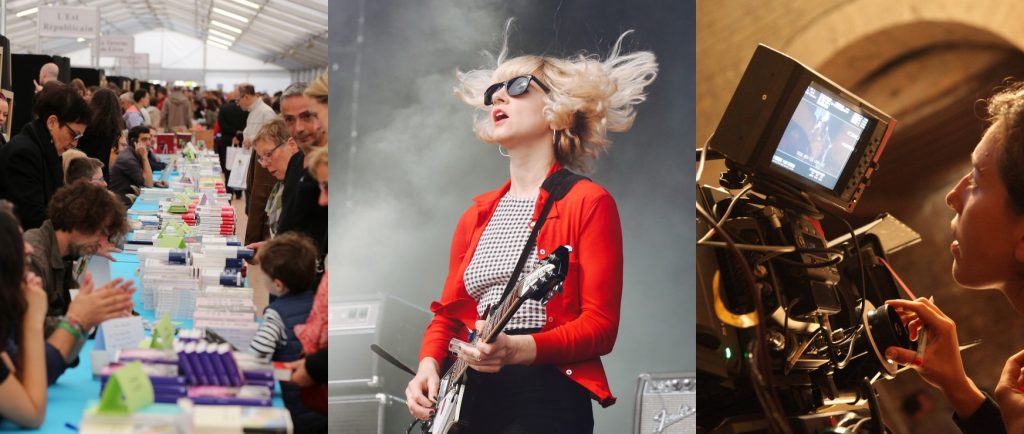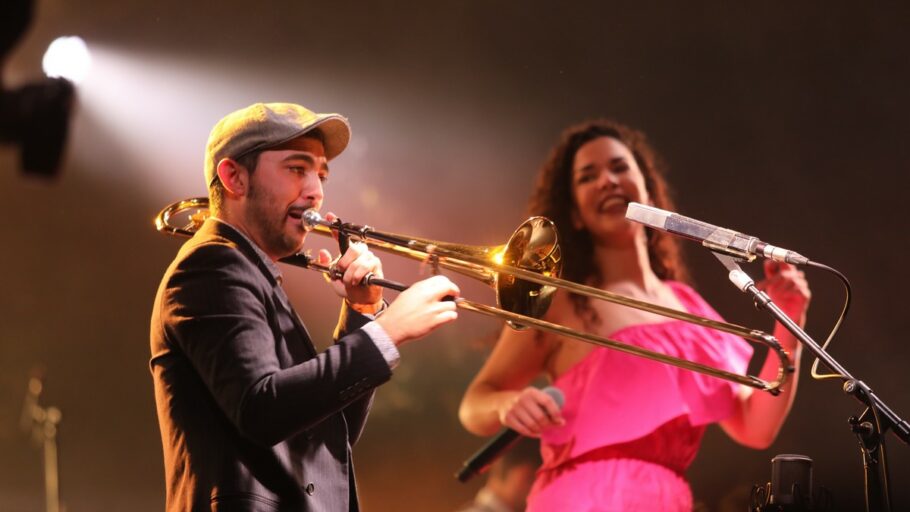Sommaire
Between Paris, Brussels, Luxembourg, Frankfurt, Stuttgart, Basel and Lyon, the Grand Est is an attractive cultural region, the founding land of the European community and open to trade. It supports local projects and deploys real engineering, particularly for live performance and film via its Grand Est cultural agency. It defends an ambitious policy for the creative industries and more particularly for cinema and audiovisual. It also supports the national and European promotion of artistic creation.
Towns full of influence
A network of creative cities and medium-sized towns, well distributed throughout the region, offers diverse, trendy and attractive urban living environments for artistic and cultural projects. Rich with a renewed cultural and natural heritage, some of which have been inscribed on UNESCO’s World Heritage List, and a dense museum network. These towns all enjoy a wide range of cultural structures of national interest in live performance and music : the National Theatre of Strasbourg, the National Ballet of Nancy’s choreographic centre, 2 national operas, 5 national drama centres, 6 national performance venues 4 permanent orchestras and 6 contemporary music venues. Artistic training of international influence is given in architecture, fine arts, theatre, circus, puppetry, etc. as well. Major festivals also enhance the cultural attractiveness of the Grand Est. More recently, digital spaces and fab-labs have emerged within the context of the development of creative industries and cultural entrepreneurship, with a new generation of creators.
Evolving rural areas
The Région Grand Est wants to strengthen the attractiveness of rural areas through culture. Numerous artistic and cultural players have settled there over the past few years. Also worth noting is an undeniable expertise, particularly in terms of glass art, recognised internationally with Saint-Louis, Lalique in Wingen-sur-Moder, Meisenthal, Baccarat, Vannes-le-Châtel, drivers of the cultural and economic development of these rural areas
Cross-border opportunities
With 40% of the French borders and the management of European funds, the Région Grand Est has developed new cultural synergies, favourable to an exchange of artistic productions and exhibitions, the premises of an integrated cultural Europe. The head office of the French-German TV channel Arte is located in Strasbourg, a dynamic Eurometropolis. To date, cultural cooperation projects involve project owners from the Grand Est and the Swiss cantons of Basel and Friborg, the German states of Saarland, Rhineland-Palatinate and Baden-Württemberg, as well as Belgian Wallonia and the Luxembourg State. Our rich border history also explains the vivacity of the regional languages with an encouragement for Franco-German bilingualism and the Region’s interest in memorial matters (Alsace Moselle Memorial in Schirmeck).
Visibility on professional platforms
Keen to develop the export of regional artistic productions in France but also in Europe and around the world, the Région Grand Est supports cultural structures and artists on various professional platforms : for books and publishing at the “Frankfurter Buchmesse” / Book Fair and the Paris Book Fair (“Salon du Livre”) ; in live performance at the “Internationale Kulturebörse” in Freiburg, the “Tanzmesse” in Düsseldorf for dance, at the “Bis” in Nantes, in contemporary music festivals (“Transmusicales” in Rennes) and with a place identified as Région Grand Est at the “Festival international de Théâtre” / Avignon Theatre Festival. In cinema, the Région Grand Est has a strong presence at major festivals.


